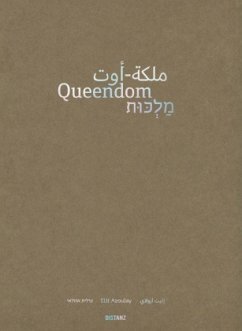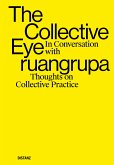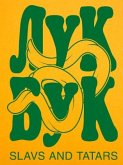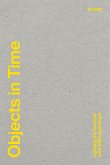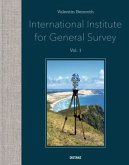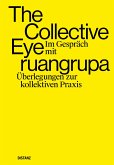Narrative einer neuen Ordnung
Israels Beitrag zur 59. Venedig-Biennale
Ilit Azoulay (geb. 1972 in Tel Aviv-Jaffa, lebt und arbeitet in Berlin) ist bekannt für ihre fotografischen Tableaus, welche sich aus Alltagsgegenständen, Architekturfragmenten und Artefakten collagenartig zusammensetzen. Ihre einmalige Methodik der fotografischen Fragmentierung und Zusammensetzung bisher unbeachteter Gegenstände und deren Geschichten setzt sie in ihrem aktuellen Projekt fort. 2022 leistet sie den Beitrag für den israelischen Pavillion auf der Biennale in Venedig. Mittels großformatiger Panoramafotomontagen, einer kollaborativen Klanginstallation und architektonischer Interventionen überführt Azoulay den Pavillon von der eurozentrischen Moderne in die Zeitgenossenschaft des Nahen Ostens. Ausgehend von vergessenem Archivmaterial über mittelalterliche Intarsiengefäße islamischer Kunst steht die Frage des Eigentums an Bildern und der kulturellen Aneignung im Mittelpunkt. Das Queendom - eine Geschichte der Transformationen - ist aus einem allumfassenden Systemabsturz hervorgegangen, der aus einer Fehlfunktion bestehender Machtstrukturen resultiert, aus dem digitalen Raum überschwappt und eine neue Ordnung von Daten in die Realität spült.
Diesen Umbruch greift die Künstlerin in der die Ausstellung erweiternden und experimentellen 360°-Publikation auf, die weder einen bestimmten Anfang noch ein Ende hat. Die Fotomontagen von Azoulay bilden als Kartografien des Queendom die Fixpunkte des Buches. Die akkumulativen Bildwelten und vielstimmigen Textbeiträge von Naomi Alderman, Timo Feldhaus, Tehila Hakimi, Hanin Hannouch, Shelley Harten, Sheikha Hlewa, Adi Keissar, Lali Tsipi Michaeli, Vicki Shiran und Anat Zecharia spiegeln die Fähigkeit des Queendom wider, ein vernetzter Raum der Wissensproduktion zu sein, in dem Erzählungen und Geschichte verschmelzen.
Narratives of a new order
Israeli Pavillion at the 59th Venice Biennale
Ilit Azoulay (b. Tel Aviv-Jaffa 1972, lives and works in Berlin) is known for her photographic tableaus, which are composed of everyday objects, architectural fragments and artifacts in the manner of collages. In her current project she continues her unique method of taking apart and reassembling unregarded objects and their stories through macro-lens photography. In 2022 she will contribute to the Israeli Pavilion at the Venice Biennale. By means of large-scale panoramic photomontages, a collaborative sound installation and architectural interventions Azoulay transitions the Pavilion from euro-centric modernity to Middle Eastern contemporaneity. Based on forgotten archival research materials on medieval inlaid vessels of Islamic art, the question of ownership over images and of cultural appropriation takes center stage. The Queendom-a story of transformations- has risen out of an all-encompassing system crash, resulting from a malfunction of existing power structures, flooding out of the digital realm, and spilling a new order of data into reality.
The artist picks up on this upheaval in a 360° publication, which expands on the exhibition and has neither a definite beginning nor an end. Azoulay's photomontages function as cartographies to the Queendom and focal points of the publication.
The accumulative and polyphonic methodology of the book, with contributions by Naomi Alderman, Timo Feldhaus, Tehila Hakimi, Hanin Hannouch, Shelley Harten, Sheikha Hlewa, Adi Keissar, Lali Tsipi Michaeli, Vicki Shiran and Anat Zecharia, mirrors the Queendom's capacity as a rhizomatic space of knowledge production, where stories and histories merge.
Israels Beitrag zur 59. Venedig-Biennale
Ilit Azoulay (geb. 1972 in Tel Aviv-Jaffa, lebt und arbeitet in Berlin) ist bekannt für ihre fotografischen Tableaus, welche sich aus Alltagsgegenständen, Architekturfragmenten und Artefakten collagenartig zusammensetzen. Ihre einmalige Methodik der fotografischen Fragmentierung und Zusammensetzung bisher unbeachteter Gegenstände und deren Geschichten setzt sie in ihrem aktuellen Projekt fort. 2022 leistet sie den Beitrag für den israelischen Pavillion auf der Biennale in Venedig. Mittels großformatiger Panoramafotomontagen, einer kollaborativen Klanginstallation und architektonischer Interventionen überführt Azoulay den Pavillon von der eurozentrischen Moderne in die Zeitgenossenschaft des Nahen Ostens. Ausgehend von vergessenem Archivmaterial über mittelalterliche Intarsiengefäße islamischer Kunst steht die Frage des Eigentums an Bildern und der kulturellen Aneignung im Mittelpunkt. Das Queendom - eine Geschichte der Transformationen - ist aus einem allumfassenden Systemabsturz hervorgegangen, der aus einer Fehlfunktion bestehender Machtstrukturen resultiert, aus dem digitalen Raum überschwappt und eine neue Ordnung von Daten in die Realität spült.
Diesen Umbruch greift die Künstlerin in der die Ausstellung erweiternden und experimentellen 360°-Publikation auf, die weder einen bestimmten Anfang noch ein Ende hat. Die Fotomontagen von Azoulay bilden als Kartografien des Queendom die Fixpunkte des Buches. Die akkumulativen Bildwelten und vielstimmigen Textbeiträge von Naomi Alderman, Timo Feldhaus, Tehila Hakimi, Hanin Hannouch, Shelley Harten, Sheikha Hlewa, Adi Keissar, Lali Tsipi Michaeli, Vicki Shiran und Anat Zecharia spiegeln die Fähigkeit des Queendom wider, ein vernetzter Raum der Wissensproduktion zu sein, in dem Erzählungen und Geschichte verschmelzen.
Narratives of a new order
Israeli Pavillion at the 59th Venice Biennale
Ilit Azoulay (b. Tel Aviv-Jaffa 1972, lives and works in Berlin) is known for her photographic tableaus, which are composed of everyday objects, architectural fragments and artifacts in the manner of collages. In her current project she continues her unique method of taking apart and reassembling unregarded objects and their stories through macro-lens photography. In 2022 she will contribute to the Israeli Pavilion at the Venice Biennale. By means of large-scale panoramic photomontages, a collaborative sound installation and architectural interventions Azoulay transitions the Pavilion from euro-centric modernity to Middle Eastern contemporaneity. Based on forgotten archival research materials on medieval inlaid vessels of Islamic art, the question of ownership over images and of cultural appropriation takes center stage. The Queendom-a story of transformations- has risen out of an all-encompassing system crash, resulting from a malfunction of existing power structures, flooding out of the digital realm, and spilling a new order of data into reality.
The artist picks up on this upheaval in a 360° publication, which expands on the exhibition and has neither a definite beginning nor an end. Azoulay's photomontages function as cartographies to the Queendom and focal points of the publication.
The accumulative and polyphonic methodology of the book, with contributions by Naomi Alderman, Timo Feldhaus, Tehila Hakimi, Hanin Hannouch, Shelley Harten, Sheikha Hlewa, Adi Keissar, Lali Tsipi Michaeli, Vicki Shiran and Anat Zecharia, mirrors the Queendom's capacity as a rhizomatic space of knowledge production, where stories and histories merge.

